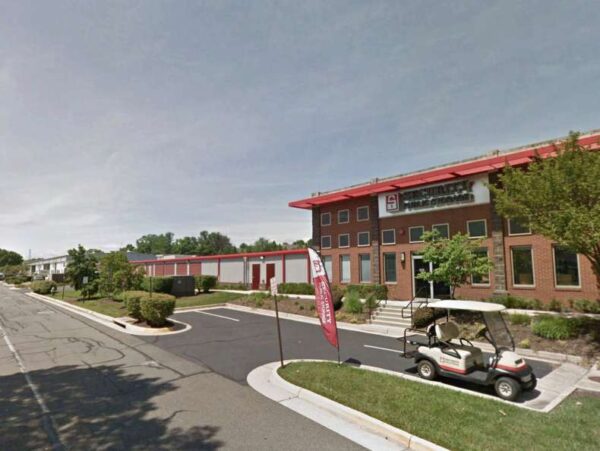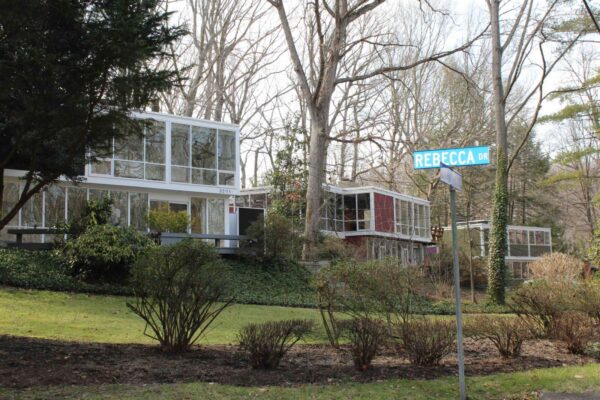
A new self-storage facility could take the place of an existing warehouse in the Town of Herndon.
Security Public Storage is hoping to get the town’s blessing to demolish a warehouse at 331 Victory Drive to build a self-storage facility.
The existing warehouse was built in 1965 and is currently divided into tenants’ spaces and rough metal edging.
So far, town staff say they’re in favor of the preliminary proposal. In an April 1 report, town staff said the new facility seems to “soften” the current building’s “stark industrial facades further.”
“Efforts seem to have been made to break up and soften the basic industrial design of the building,” the report says.
The application requires more planning approvals because it is part of a zoning map amendment.
The town’s Architectural Review Board will discuss the project at a meeting on Thursday (April 21) at 7:30 p.m. in the Herndon Town Council’s chambers. The board will then provide findings to the town’s Planning Commission for additional discussion.

Hollin Hills could soon get another layer of oversight to preserve the hundreds of stylistic, mid-20th century homes built in the area.
The Fairfax County Planning Commission voted on Wednesday (Feb. 23) to recommend designating Hollin Hills as a Historic Overlay District, which would require approval from the county’s Architectural Review Board for certain projects, such as demolitions and the design of properties.
“The HOD is really critical to protect Hollin Hills, both as a historic resource and as a community,” resident J.G. Harrington said during a public hearing prior to the commission’s vote.
Located near Hybla Valley, Hollin Hills consists of more than 450 homes built between 1946 and 1971. Most went up in the 1950s and 1960s, under the vision of architect-planner Charles Goodman and developer Robert Davenport.
Known for its ceiling-to-floor windows on one-story homes and two-story residences built into the community’s hilly areas, the neighborhood is registered as a historic place nationally and by the county and state. It drew regular tours of curious visitors before the pandemic.
However, many residents fear that developers could ruin the aesthetic of the neighborhood, producing bigger but more architecturally bland homes and making lot sizes smaller.
“Today, buyers come to Hollin Hills because of the midcentury architecture,” said Barbara Ward, a resident of the community since 1989 and chair of the Civic Association of Hollin Hills’ Design Review Committee.
If the historic district designation is approved, the architectural review board could deny demolition permits, but developers would still be able to appeal the matter to the Board of Supervisors. The ARB would also make design recommendations for new buildings and certain projects, such as home additions.
“The guidelines emphasize flexibility and encourage site-specific solutions rather than a one-size-fits-all approach,” a proposed handbook with design guidelines says. “They are guidelines, not requirements. Hollin Hills has evolved since the original development phases of the neighborhood, and will continue to do so.”
The book says the guidelines are not meant to “discourage change or growth” but “preserve, complement, and reinforce the modernist historic character of the district” by encouraging the use of compatible materials, among other principles.
Civic Association of Hollin Hills President Patrick Kelly expressed support for making the neighborhood a Historic Overlay District, recalling how the association began the process in 2017 with conversations and visits with homeowners.
Kelly acknowledged that there are some community members with concerns about having another layer of review, but most residents and homeowners agree on the need to protect the architectural integrity of the community.
Mount Vernon District Supervisor Dan Storck conducted a survey last September that found 62% of respondents were in favor of creating a Historic Overlay District.
“Only 30 homes have found to be noncontributing…after almost 75 years,” Kelly said, referring to residences that don’t meet the Historic Overlay District requirements but would still be included in it. “It’s testament to…the desire of our homeowners to renovate and continue to live in homes that meet the aesthetic of the midcentury modern harmony and conformity. And so, it’s not the past that we’re concerned about. It’s the future.”
The Fairfax County Comprehensive Plan amendment required to make the designation official will now go to the Board of Supervisors for a public hearing on March 8.

